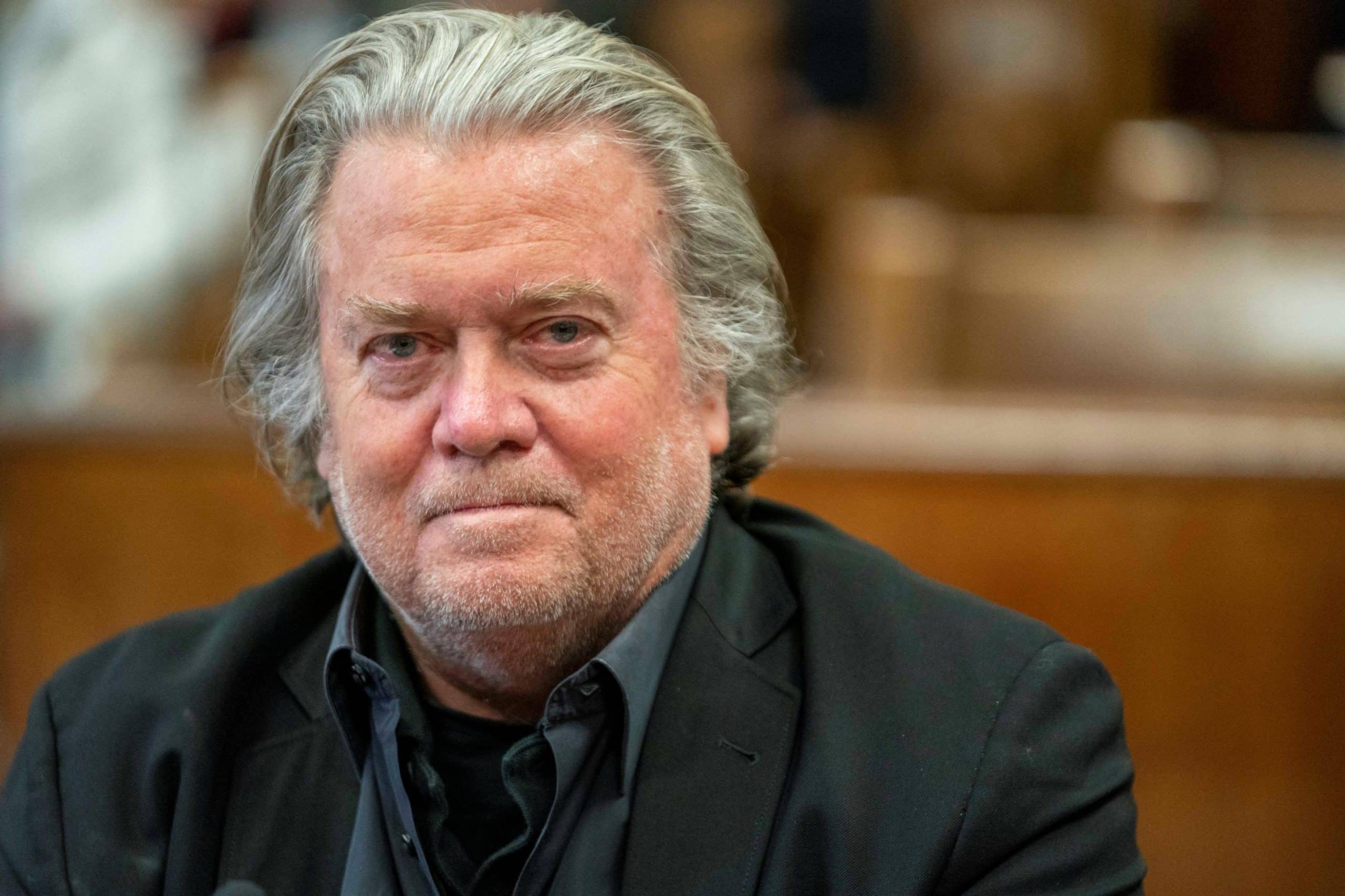Steve Bannon, the extremely controversial American media executive who served as the chief strategist at the White House in Donald Trump’s administration, is currently in the spotlight after being convicted in federal court.
As of 2024, Steve Bannon’s net worth is estimated at $70 million.
The former investment banker and aide to Donald Trump reported to prison at the end of June this year to begin his four-month sentence for not refusing to comply with a subpoena. His strange claim that he didn’t need to comply because of presidential immunity (despite never being the President) fell flat, and he’s now suffering the consequences.
This wasn’t the first scandal in Bannon’s life – or his first arrest, for that matter. Even so, he has been tremendously successful in other ways, with Bannon having accumulated millions of dollars through movie production, smart investments, and work in political circles.
Keep reading this post to learn more about Bannon and his rise to fame.
Latest Update: In July 2024, Steve Bannon reported to a federal prison to serve his four-month sentence for contempt of Congress after refusing to testify regarding the January 6th Capitol riot. Despite his legal troubles, Bannon remains a controversial figure in right-wing media.
How Much is Steve Bannon Worth in 2024?
- Net Worth: Estimated at $70 million.
- Source of Wealth: Media executive, investment banker, White House strategist.
- Cambridge Analytica Earnings: Sold his stake in Cambridge Analytica for $5 million.
- Seinfeld Syndication: Earned $32 million in dividends from his stake in the syndication deal of Seinfeld.
- Political Earnings: Made significant income during his time as a strategist in the Trump administration.
- Legal Issues: Paid heavy fines and served time for fraud charges related to the “We Build the Wall” campaign.
Steve Bannon’s Net Worth Breakdown:
Steve Bannon’s net worth is difficult to pin down despite the several financial statements that have been released over the years as part of his employment, divorce proceedings, and more. Even so, our research allowed us to find sufficient data to break down his biggest earnings and assets, as well as set an estimate of how much he is worth today.
| Asset or Income Source | Contribution to Net Worth |
| 2017 net worth | $13-56 million |
| Bannon Strategic Advisors worth in 2017 | $25 million |
| Breitbart News salary | $191,000 annually |
| Total earnings in 2016 | $1.3 million |
| Sale of Cambridge Analytica stake | $5 million |
| Glittering Steel earnings | $167,000 by 2017 |
| Stake in Bannon Film Industries | $1-5 million |
| Cambridge Analytica salary | $125,000 annually |
| Seinfeld syndication deal | 1% of profits – $32 million in dividends |
| Total Net Worth | $70 million |
6 Fun Facts About Steve Bannon
- Military Background: Served as a naval officer before transitioning to Wall Street.
- Hollywood Producer: Produced several films in the 90s and early 2000s, including The Indian Runner and Titus.
- Seinfeld Profits: Earned significant wealth from a stake in Seinfeld‘s syndication.
- Breitbart Leader: Led Breitbart News, a major conservative news outlet, known for its right-wing, nationalist views.
- Political Strategist: Played a key role in Donald Trump’s 2016 presidential campaign as chief strategist.
- Legal Controversies: Faced numerous legal battles, including charges for defrauding donors and contempt of Congress, resulting in prison time.
Latest News & Controversies
As of 2024, Steve Bannon continues to make headlines due to his legal troubles and political controversies.
Bannon’s latest issue stems from his involvement in the January 6th Capitol riot investigation. He was convicted of contempt of Congress after refusing to comply with a subpoena issued by the House committee investigating the attack. In July 2024, he began serving a four-month prison sentence following a lengthy appeal process, which was ultimately rejected by the federal courts.
Bannon’s legal troubles also include earlier charges in connection with the “We Build the Wall” fundraising campaign, where he faced fraud accusations. Though pardoned by former President Donald Trump in this case, Bannon still faces state-level charges regarding the misuse of funds raised to build a wall along the U.S.-Mexico border.
Despite his legal battles, Bannon remains active in right-wing media. He continues to influence the political landscape through his podcast, Bannon’s War Room, which is known for promoting far-right ideologies.
He also maintains strong ties with nationalist movements in Europe.
Early Life, Education, and Time at the Navy
Stephen Kevin Bannon was born in Norfolk, Virginia, on November 27, 1953. His parents were Doris Bannon, a homemaker, and Martin J. Bannon Jr., an AT&T telephone lineman and middle manager.
Steve has two brothers, all of which studied at Benedictine High School, a Catholic military school for males in Richmond.
After he graduated from Benedictine College Preparatory in 1971, Bannon enrolled at Virginia Tech to study urban planning, and this was when he got his first taste of politics. He served as the student government association president at the college, spending his summers working at a local junkyard.
In 1976, Steve Bannon graduated from Virginia Tech College of Architecture and Urban Studies, obtaining his bachelor’s degree. He then joined the Navy and attended Officer Candidate School.

While in the Navy, Bannon enrolled at Georgetown University School of Foreign Service to study for a master’s degree in national security studies. He subsequently enrolled at Harvard Business School for his MBA degree, which he completed in 1985.

US Navy
Steve Bannon was an officer in the United States Navy between 1997 and 1983. He initially served on the destroyer USS Paul F. Foster in the Pacific Fleet as a surface warfare officer.
Then, he became the special assistant to the chief of naval operations at the Pentagon. It was during his tenure at the Pentagon that he obtained his master’s degree, all whilst handling communication between senior officers and writing reports about the Navy fleet.
In 1980, the Army deployed Bannon to the Persian Gulf during the Iran hostage crisis in a mission to assist with Operation Eagle Claw. The mission was a major failure, and according to Bannon, this was what made him join politics.
“I wasn’t political until I got into the service and saw how badly Jimmy Carter fucked things up. I became a huge Reagan admirer. Still am. But what turned me against the whole establishment was coming back from running companies in Asia in 2008 and seeing that George W. Bush had fucked up as badly as Carter. The whole country was a disaster.” – he shared.
Fox News Exclusive: The making of Steve Bannon, from young Navy man to White House power player https://t.co/f9nR5Kfsr9 pic.twitter.com/eQXtfvjS8X
— Fox News (@FoxNews) March 30, 2017
Steve Bannon’s Personal Life
Bannon has been divorced thrice and has three daughters from his marriages. He first married Cathleen Suzanne Houff, with whom he has a daughter, Maureen, born in 1988.
Bannon’s second marriage was to a former investment banker, Mary Louise Piccard, who he married in April 1995. They had twin daughters who were born a few days after the wedding.
He divorced Piccard in 1997 in a very public, scandalous divorce.
During the proceedings, Piccard stated that Bannon made racist, antisemitic remarks about The Archer School for Girls, not wanting to send his daughters there ‘because there were too many Jews’. Bannon denied these accusations and in the end, chose to send his daughters to the school. Piccard also claimed that he attacked her at their home, and he was charged in February 1996 with battery and domestic violence.
However, Ms. Piccard didn’t show up in court, so the case was eventually dropped. “If I went to court he and his attorney would make sure that I would be the one who was guilty.” – explained Piccard.
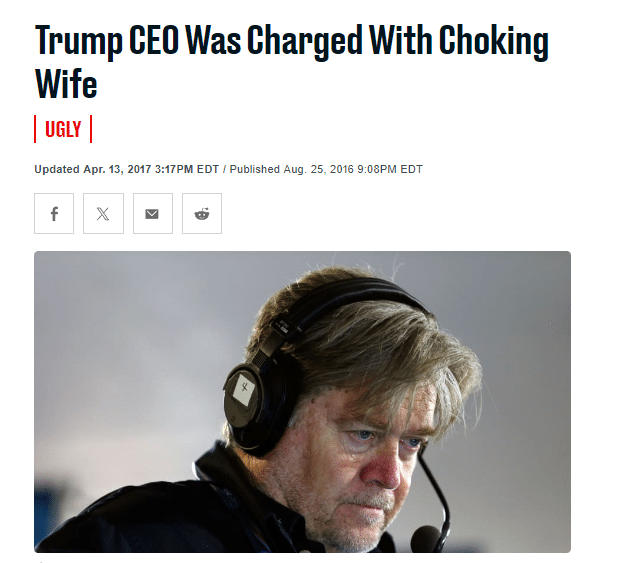
Bannon’s third marriage was to Diane Clohesy, a model he married in 2006 and divorced three years later. He doesn’t have children from his third marriage.
Steve Bannon Net Worth: From Banker to Strategist to Inmate
After his military service, Steve Bannon jumped into the career world, putting his education to work. He has since worked in different industries, as well as politics, and founded some highly profitable businesses.
Let’s see how his rollercoaster of a career progressed over time.
Bannon as an Investment Banker
Bannon started working at Goldman Sachs as an investment banker after leaving the military, working in their Mergers and Acquisitions Department.
He relocated to Los Angeles to assist the company in expanding their reach in the entertainment industry, and remained in his position for a total of two years, lastly taking on the role of vice president.
Steve Bannon’s First Business Bannon & Co.
In 1990, Bannon launched his first business with colleagues from Goldman Sachs. The business was a boutique investment bank titled Bannon & Co., which specialized in media. At Bannon & Co., as, his company was representing Westinghouse Electric, Bannon navigated the sale of Castle Rock Entertainment to Turner Broadcasting System, owned by Ted Turner at the time.
As part of the sale contract, Bannon got a financial stake in five TV shows, including Seinfeld (which was in its third season at the time). This deal would prove extraordinarily lucrative as Seinfeld became one of the most popular TV shows of all time.
In 1998, eight years after the establishment of the business, Société Générale acquired Bannon & Co. for an undisclosed sum.
While he was still managing Bannon & Co., the businessman also worked as acting director of an earth science research project titled Biosphere 2 in Oracle, Arizona. He remained as head of this project for two years before leaving it in 1995.
Expanding His Reach in Media and Entertainment
Steve Bannon was expanding his career horizons fast at this point, dabbling in the entertainment industry, as well. In the 1990s, he became a Hollywood film producer.
He worked on a total of 18 films, which include:
- The Indian Runner (1991) as executive producer
- Titus (1999) as co-executive producer
- Raegan: In the Face of Evil (2004) as co-producer, director, and writer
- Border War: The Battle Over Illegal Immigration (2006) as executive producer
- Tradition Never Graduates: A Season Inside Notre Dame Football (2007) as executive producer
- The Chaos Experiment (2009) as executive producer
- Generation Zero (2010) as writer, producer, and director
- Battle for America (2010) as writer, producer and director
- Fire from the Heartland: The Awakening of the Conservative Woman (2010) as writer, producer and director
- The Undefeated (2011)
- The Hope & The Change (2012) as writer, producer, and director
- Occupy Unmasked (2012) as director and writer
- Rickover: The Birth of Nuclear Power (2014) as executive producer
- Clinton Cash (2016) as writer and executive producer
- Trump @War (2019) as writer and director

Bannon’s Work Before the White House
In 2006, having worked in high positions at Goldman Sachs, Bannon convinced his former employer to invest in a company called Internet Gaming Entertainment. The company later rebranded as Affinity Media and employed Bannon as its CEO.
Between 2007 and 2011, Bannon was the CEO and chair of Affinity Media. This is the company that made its fortune by selling virtual gold to World of Warcraft players.
Breitbart News
In 2007, Steve Bannon became a founding board member of Breitbart News, a far-right opinion, news, and commentary website.
In March 2012, after the death of Andrew Breitbart, the founder of the organization, Bannon took on the role of executive chairman of Breitbart News LLC, the parent company of Breitbart News.
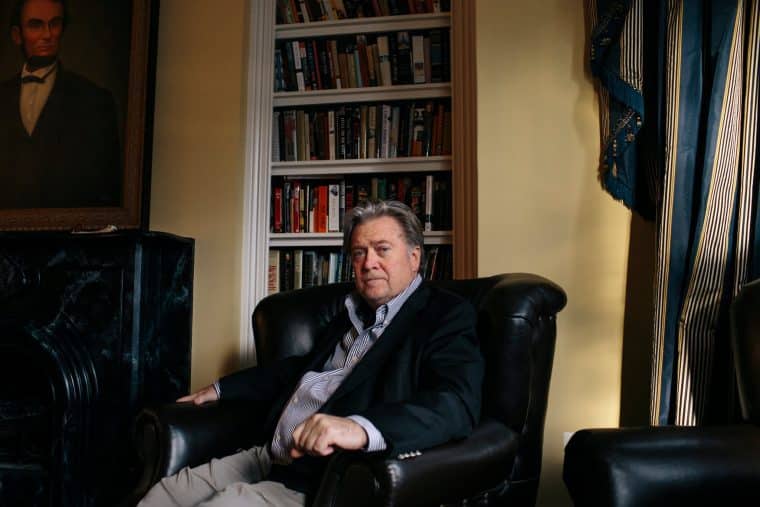
His leadership as executive chairman of the company was rather contradictory to its founder’s mission. As executive chairman, Bannon made Breitbart more nationalistic and alt-right oriented. Ben Shapiro, who once supported him, called Bannon a “‘bully who sold out Andrew’s mission to back another bully, Donald Trump.'”
He eventually left Breitbart News to join former President Donald Trump in his presidential campaign, later becoming one of his councilors.
Joining the White House
In 2016, Steve Bannon became the chief executive officer of Donald Trump’s presidential campaign. Following Trump’s election, he was appointed chief strategist and senior counselor to the President, a position he retained for a total of eight months. This was a newly created position, one that reportedly had nearly equal authority to that of the chief of staff. And, as a staff member in the President’s Executive Office, this did not require Senate confirmation.
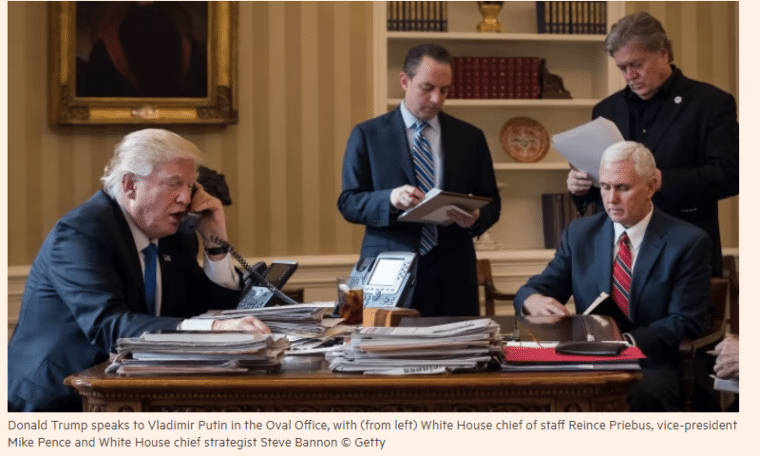
To become a chief strategist, Bannon left Breitbart News, Cambridge Analytica, and the Government Accountability Institute, the three organizations he worked in at the time.
However, his time at the White House was challenging. His appointment was opposed by the Anti-Defamation League, the Southern Poverty Law Center, the Council on American-Islamic Relations, and the Democratic Senate Minority Leader Harry Reid, among others.
This group opposed him because of Breitbart’s statements that sounded antisemitic and racist.
Some of the people defending Bannon from these allegations included Ben Shapiro, Pamela Geller, David Horowitz, and Morton Klein. However, on November 15, 2016, US representative David Cicilline of Rhode Island wrote to President Trump in a letter signed by 169 Democratic House representatives, asking him to rescind his appointment of Bannon.
In response to these allegations, President Trump responded in an interview with The New York Times:
“I’ve known Steve Bannon a long time. If I thought he was a racist, or alt-right, or any of the things that we can, you know, the terms we can use, I wouldn’t even think about hiring him.”
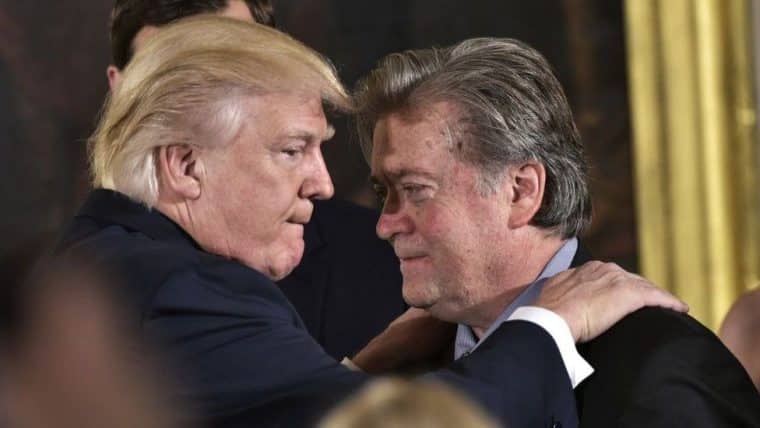
In February 2017, the chief strategist Bannon appeared on Time Magazine’s cover, where he was labeled ‘the great manipulator’. The associated article titled “Is Steve Bannon the Second Most Powerful Man in the World”?”, discusses his influence in the White House.
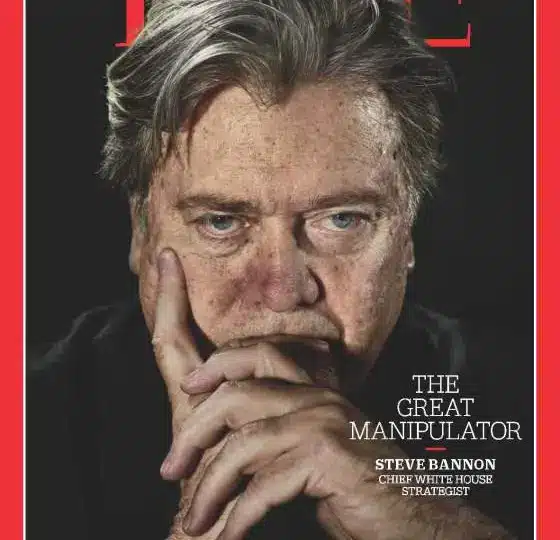
In October 2018, the Senate Intelligence Committee was reported to have started an investigation into Bannon’s activities during the Trump campaign, including any knowledge he might have had about contacts between George Papadopolous and Carter Page and Russia.
In a hearing of the House Committee on Oversight and Government Report in March 2019, Commerce Secretary Wilbur Ross was questioned about adding a citizenship question to the 2020 census after discussing it with Bannon, Kris Kobach, and Jeff Sessions. Representative Lacy Clay accused Ross of perjury and attempting to weaken minority voting rights, and called for his resignation, but Ross claimed that change was requested by the Justice Department.
Subsequently, on April 23 of the same year, the Supreme Court heard appeals regarding this matter.
Reports indicated that Bannon published stories in an attempt to undermine H.R. McMaster, as well as leaked information to alt-right media. The Trump administration retroactively allowed Bannon to communicate with Breitbart News, where he worked as the de facto editorial director. As one of his final acts in office, President Donald Trump pardoned Bannon (though he still found his way to a jail cell before long).
Removal from the National Security Council
Steve Bannon was removed from the National Security Council in April 2017 in a reorganization by the US national security advisor McMaster, whom he helped select before.
His role was initially to check former national security advisor Michael Flynn, who resigned in February that same year for misleading the vice president. With him gone, Bannon was no longer needed in his position, but he reportedly opposed the removal and threatened to quit his position as the chief strategist.
The White House and Bannon denied any resignation threats.
Leaving the White House
Bannon’s work as chief strategist at the White House ended in August 2017, shortly after the Charlottesville Unite the Right Rally. The NAACP called for his removal, labeling him a ‘symbol of white nationalism’.
White House Chief of Staff John F. Kelly allegedly asked Bannon to resign, though Bannon claimed he submitted his resignation on August 4, intending to stay in his position as political strategist for one year only. His last day was mutually agreed upon, with the White House thanking him for his service.
Returning to Breitbart
In January 2018, after Michael Wolff reported on Bannon’s criticism of Trump’s children in his book Fire and Fury, Donald Trump disavowed Bannon, saying ‘he had lost his mind’.

Fast forward to August 18, 2017, and Steve Bannon returned as executive chairman of the controversial alt-right outfit Breitbart News following his time at the White House.
But, five months after his re-appointment, he stepped down from his position at the company, reportedly after the major funders of the company, Robert and Rebekah Mercer, decided to push him out because of his break with Donald Trump.
During his short return to the company, Bannon hosted a radio show titled Breitbart News Daily, which aired on the SiriusXM Patriot radio channel.
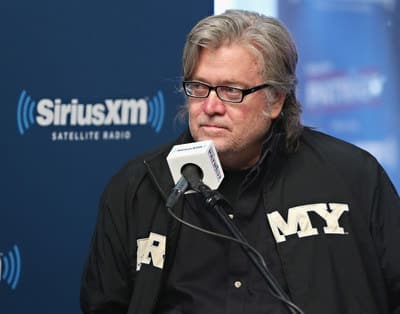
Bannon’s Political Career after the White House
After his departure departed from the White House, Bannon started backing insurgent candidates in primary elections. His standing as a political strategist clashed with the Republican establishment and suffered when Roy Moore, his favored candidate, lost the 2017 Alabama Senate election to Doug Jones, a Democrat.
During this time, Bannon targeted incumbent Republicans who insufficiently supported Trump’s agenda, in his opinion.
In October 2017, he shared that he plans to challenge six of seven Republican senators in the elections of the following year, demanding they oppose Mitch McConnell as Senate majority leader. He used his organization, Citizens of the American Republic, to do this.
Bannon was initially praised for aiding Roy Moore in defeating Luther Strange in the Republican primary for the Alabama Senate seat, but his support also led to widespread criticism. Critics believed that Moore would be a worse candidate in a general election and were vindicated when Moore lost.
Bannon dismissed the allegations and, when Moore ultimately lost, his credibility as a political strategist was severely questioned.
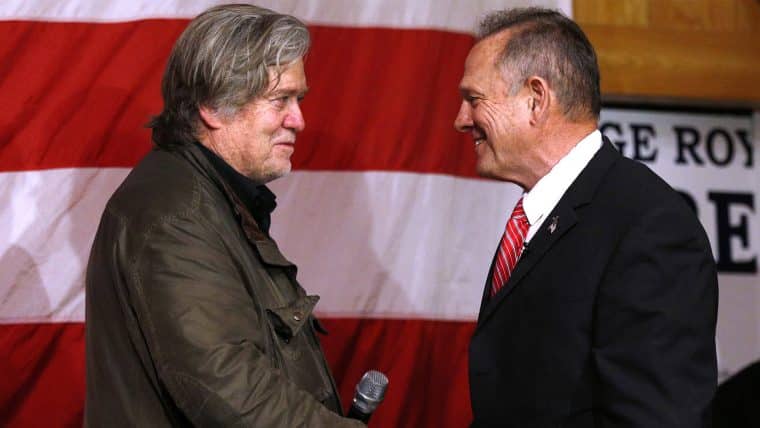
After leaving the White House, Bannon toured Europe, meeting with far-right parties like:
- Austria’s Freedom Party
- UK Independence Party
- France’s National Rally
- Dutch Party for Freedom
Even so, his efforts met limited success due to a lot of skepticism about US involvement.
Steve Bannon Net Worth: Its Rise Over the Years
In 2017, when Steve Bannon was the chief strategist of President Donald Trump, he was asked to disclose his assets. He disclosed assets between $13 million and $56 million, which included his political consulting firm Bannon Strategic Advisors Inc., worth around $25 million at the time.
At this point, Bannon disclosed his salary as executive director at Breitbart News Network, claiming that he earned $191,000 a year before he resigned to join Donald Trump in his presidential campaign. He earned over $1.3 million in salary in 2016, which included his earnings from Breitbart News. Most of this income came from Bannon Strategic Advisors.
The disclosure documents also showed that Bannon was Cambridge Analytica’s vice president for over two years before he joined Trump’s campaign. He reportedly has a stake in the data firm worth between $1 million and $5 million, and he also disclosed an ownership stake in Bannon Film Industries Inc. worth around $5 million. Glittering Steel, his production company paid him a significant amount in fees as well – $167,000.
It was later reported that Bannon sold his stake in Cambridge Analytica before joining the administration of Donald Trump for $5 million.
According to the White House disclosures at the time, Bannon’s largest individual holding is his consulting firm Bannon Film Industries, worth between $1 million and $5 million. He also took over $61,000 from the Government Accountability Institute and $125,000 from Cambridge Analytica during this period.
As for his Seinfeld syndication, Bannon negotiated a deal to acquire 1% of the syndication profits of the TV show in 1995.
Over the next two decades, this would equal around $32 million in dividends. However, when he submitted an income and expense declaration in 1997 during the divorce proceedings, the Seinfeld money wasn’t included.
At the time, he reported that his annual salary was around $500,000 and his total assets added up to $1.1 million. The profits from Seinfeld might not have been as substantial or Bannon simply didn’t disclose them in a sworn statement, but we didn’t find any information that he lost the syndication profits at any point.
Steve Bannon’s Legal Troubles
In August 2020, Steve Bannon was arrested on federal charges of money laundering and conspiracy to commit mail fraud in connection with the fundraising campaign We Build the Wall.
Bannon and the three other defendants promised that the contributions would go to build the wall, but instead they just took the money. Even though the grand jury indictment stated this, Donald Trump pardoned Bannon, sparing him from the devastating trial and essentially assured jail time.
However, federal pardons don’t cover state offenses. So, in September 2022, Steve Bannon was charged in a New York State court on counts of money laundering, fraud, and conspiracy.
Bannon refused to comply with the subpoena that was issued by the Select Committee on the January 6 Attack and was subsequently indicted by a federal grand jury on two charges of criminal contempt of Congress as well.
In July 2022, Bannon was convicted on both counts in a trial, and in October, he was sentenced to four months in prison and a fine of $6,500.
On July 1, 2024, Steve Bannon lost his appeal to the US Supreme Court and surrendered to a federal prison in Connecticut.

Steve Bannon Net Worth: Other Ventures & Investments
Steve Bannon has had quite a diverse political and media career, and has invested in numerous businesses, holding many different investments and assets over the years.
Let’s take a look at what else the former investment banker has done so far.
Other Associations and Activities
In 2017, Bannon founded a populist organization called The Movement which promotes right-wing populist groups that work against the political system in Europe.
Since 2019, Steve Bannon hosted Bannon’s War Room on Real America’s Voice TV network, radio, and podcast platforms. This is an extremely controversial show, even among many conservative circles, as it leans into just about every far-right trope imaginable.
FJB MAGA Coin
Steve Bannon and Boris Epshteyn are the owners of the FJB MAGA (standing for “F*ck Joe Biden Make America Great Again”) crypto coin. In December 2021, the duo received control and governance over the token and before they bought it, FJB had a market capitalization of $90 million.
However, while FJB promised solid returns and Bannon promised to donate part of the transaction fees to charity causes, the Wounded Warrior Project, one of the selected organizations, never received their money. This could result in yet another criminal case if the government looks into it.
Not only that, but the token has plummeted in value – over 95% in a period of 13% months! This could be the result of Bannon and his associates selling their stakes in the token but that is unconfirmed at the moment.
JUST IN: A year after Trump allies Steve Bannon and Boris Epshteyn took over the $FJB cryptocurrency project, some MAGA buyers say the pair has misled them with false promises. https://t.co/eVSgq7GzZJ
— ABC News (@ABC) February 23, 2023
Bannon’s Connection to Guo Wengui
Bannon formed a connection with exiled Chinese billionaire Guo Wengui, who provided financial support to him, including a $1 million consulting contract. The duo raised funds for GTV Media Group, which later came under federal investigation.
In June 2020, Bannon and Guo declared the formation of the New Federal State of China to oppose the Chinese Government. In August of the same year, Bannon was charged with defrauding donors to a crowdfunding campaign for a US-Mexico border wall.
When he was arrested, Guo distanced himself from Bannon and removed him from a member of his board of directors.
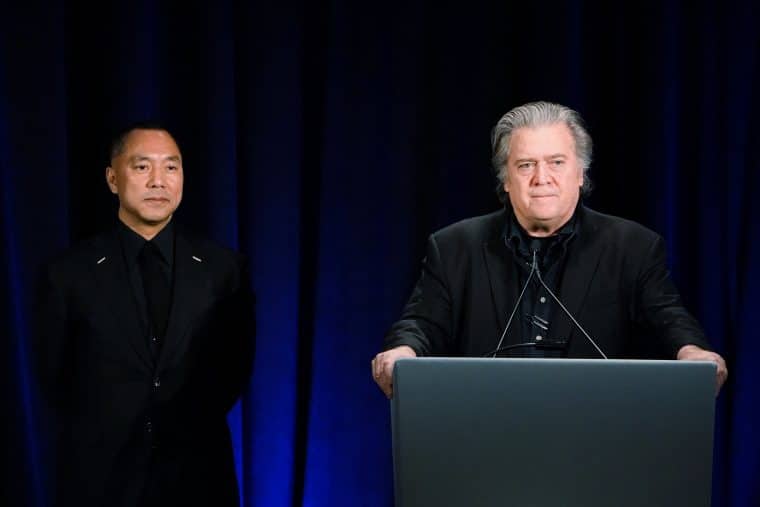
What Can We Learn from Steve Bannon’s Story?
Steve Bannon’s story is a testament to the volatile interplay between influence, wealth, and controversy.
His journey from a humble background to a multi-millionaire media executive and influential political strategist underscores the nature of success and its many faces, as well as its accompanying pitfalls.
Bannon’s early years were marked by a solid education and military service, both of which laid the groundwork for his diverse career. His transition from the Navy to investment banking at Goldman Sachs, followed by his venture with Bannon & Co., highlights his acumen in navigating diverse and complex financial landscapes.
Moreover, Bannon’s unexpected stake in Seinfeld further exemplifies his knack for seizing unique opportunities.
Venturing into media and entertainment, Bannon produced numerous films, often with partisan political themes, which somehow helped lead to a major political career. His leadership at Breitbart News shifted the outlet’s direction, leading it to incredible success by targeting the far-right, marking a period that solidified his reputation as a polarizing figure and successful leader.
Furthermore, Bannon’s foray into the White House as one of the biggest Trump supporters and the chief strategist for the president marked the pinnacle of his political influence. Despite his contentious tenure and eventual departure, his impact on the administration’s early policies was reportedly quite significant.
Still, this period also magnified the many controversies surrounding him, from accusations to promoting divisive ideologies to his involvement in political maneuvers and scams.
Legal troubles, including his indictment for fraud related to the wall campaign and his refusal to comply with a congressional subpoena culminated in a prison sentence. This highlights the precarious balance between accountability and influence in the public sphere.
Steve Bannon’s story is a cautionary tale about the complexities of using one’s power and influence in life. His ability to amass such wealth is undeniable, yet it is evident that this kind of power comes with significant legal and ethical responsibilities.
